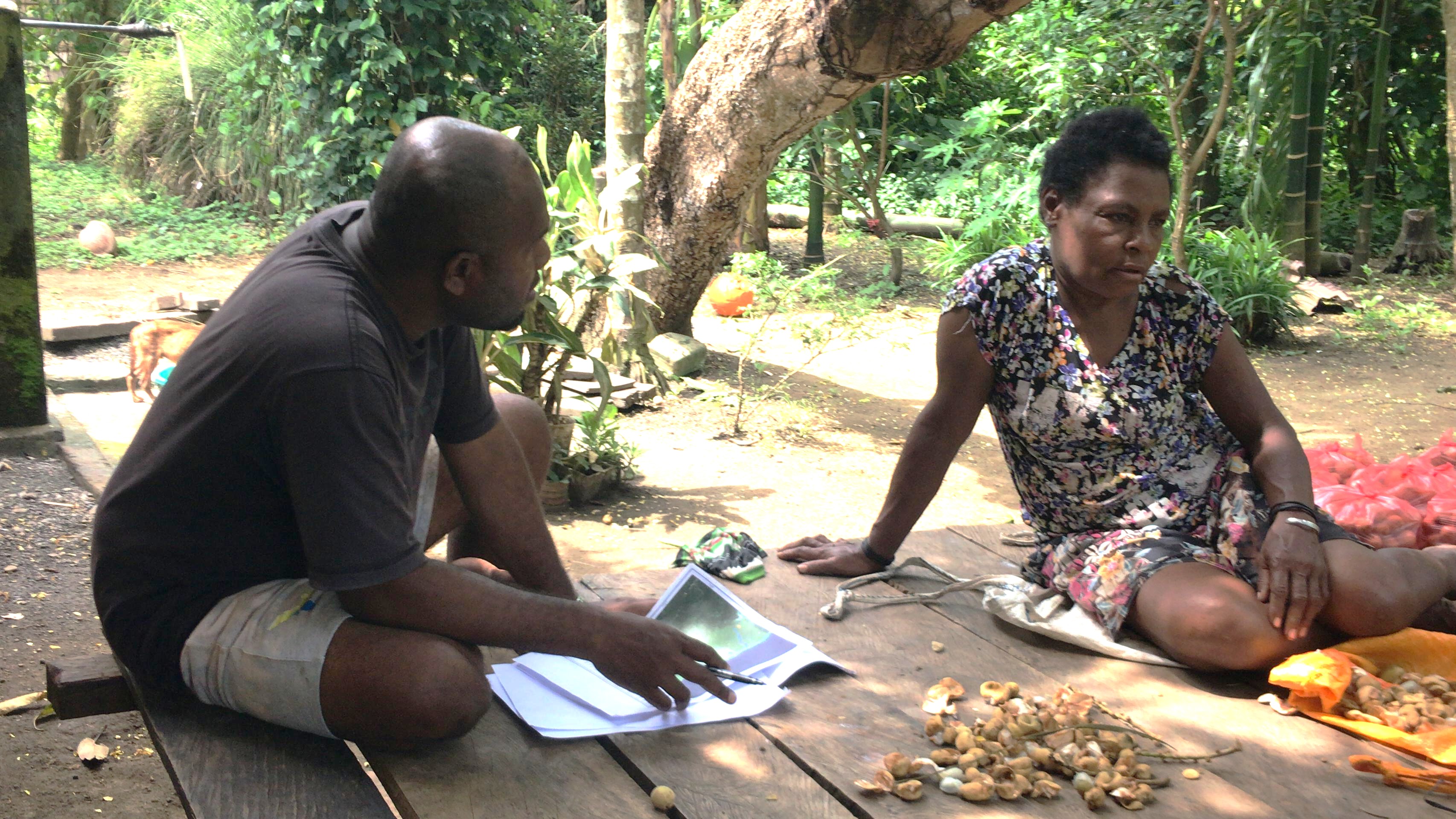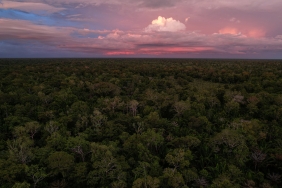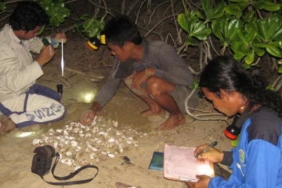LOCAL LANGUAGE, THE GATEWAY TO UNDERSTANDING INDIGENOUS PEOPLES
WWF-Indonesia has just organized an exciting Social, Economic, and Cultural Study in Syukwo Village. This activity aims to explore how residents manage forests with the Sasi system. This system is a wise method of forest utilization and has a beneficial impact, especially for forest clusters and coastal areas in Syukwo Village, located in Abun District, Tambrauw Regency, Southwest Papua Province.
The purpose of the team to Syukwo Village was to carry out a Socio-Economic Cultural study, which began on March 26 to 29, 2025, involving 4 members, including Sadrach Woisiri, Roberthus Titit, Jhon Wororit, and Glenn Ohee. In the study, information was extracted using the FGD (Focus Group Discussion) method, which was assisted by a question guide that had been prepared by the team as data material, in addition to interviews with several local communities. This is useful to find out the potential and socio-economic problems that exist in Syukwo Village.
From the data collected, it was recorded that the people of Syukwo Village have the main livelihoods, namely farming, fishing, and hunting. The results of these livelihoods are usually sold to collectors. In addition, community members also often trade with the Sabuk Nusantara 112 Ship or go to the Sausapor Sub-district to market the results they get. Culturally, the people of Syukwo Village still uphold the local wisdom of the Abun Tribe, as evidenced by practices such as the dowry payment system, which is generally carried out by deliberation and mutual cooperation by the village community, Payment of dowry can be in the form of property/objects such as East Cloth and plates, and also in the form of cash called 'kak money' (Interview Results, 2025). In addition, the methodology used in this study was also to facilitate community expression of their perspectives on the socio-economic and cultural conditions prevailing in the village.
During the data collection process, there were several obstacles, one of which was during the interview with Mr. Bodowen Sedik, who had limitations in the Indonesian language. However, this was overcome with the help of Roberthus Titit, one of the team members who also comes from the Abun community. By using the local language, Mr. Sedik was able to better understand the questions and convey relevant information, so his role in the interview changed from passive to active. The Abun language itself reflects their identity as part of the Abun Tribe.
The use of local language is an important aspect of the data collection process. Therefore, at least one team member who is proficient in the local language is needed to bridge the communication between the team and the local community. In addition, translating academic terms or language into local languages that are easier to understand is also very important so that information can be more widely accessed by the community.
Mr. Sedik said, "Nden re sibi suk sno ga more, tepga syur ee, kwe ee Kadit membi yenggras kamim me meri digane, mem bere koton daret retnde mo syur ee mo nden eee, because syur nen wa menda, mekon sugit, nden also ret nde, nden nento bi men sugit wa menggit: which means "We have protected this forest since our ancestors, because the forest has become a source of life for us". Mama Welince said, "Nden tepga mas wa men nden bi sugit si ron wa men," which means "The forest is a source of livelihood for us, food is available, and medicine is available".
From a number of answers given by respondents using the Abun language, the team learned that indigenous knowledge, for example, related to the conservation of natural resources, will be explored properly when the process of extracting information is positioned at the same level of communication ability between the study team and respondents. In addition, the use of local languages has also enhanced the team's understanding of the issues under study. Responses provided by respondents in Abun underscored the importance of indigenous knowledge, particularly about natural resource conservation. The team also observed that effective communication and information exchange can be realized if both parties engage in an equal level of communication competence. Furthermore, the incorporation of local languages significantly enhanced the team's understanding of relevant issues.





